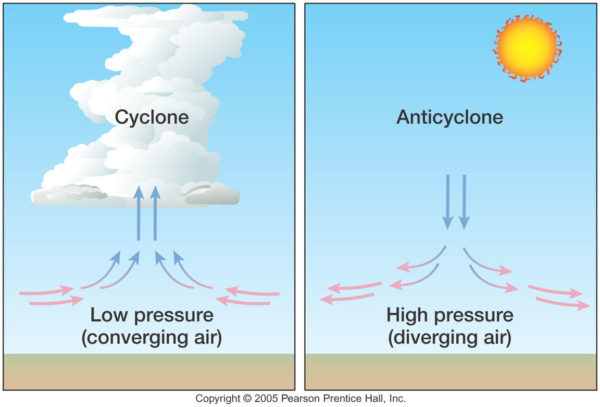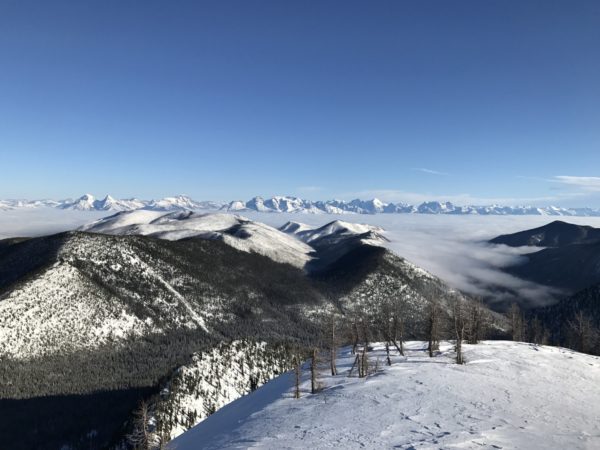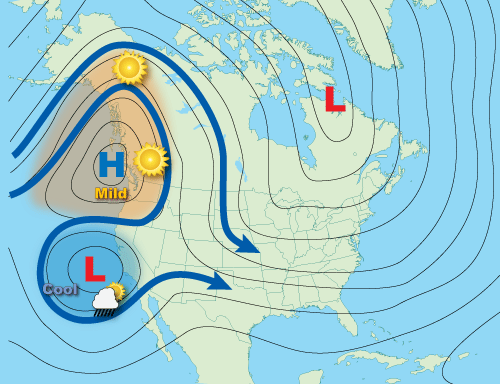A weather system characterized by dry and fair weather patterns.
High Pressure systems are characterized by subsiding air, which leads to dry and fair weather patterns. High pressure systems can be either warm or cold. While many high pressure systems are responsible for mild temperatures, some of the coldest temperatures of the winter are often associated with high pressure from continental arctic air masses. High pressure frequently results in strong inversions developing in mountainous areas, which may cause low level stratus clouds to envelop valleys. On a weather map that shows upper level atmospheric pressure, high pressure usually takes the shape of a ridge, or an upside-down U. High pressure ridges often deflect the flow of more active weather, and can cause prolonged periods of dry weather. Although mid-winter high pressure systems often lead to periods of improved snow stability, they also spell trouble for the future because the dry, clear weather promotes weak layer formation, such as depth hoar, near-surface facets, and surface hoar. Some high pressure systems cause spring-like warm spells, which can spur wet avalanche activity.

High pressure is caused by subsiding air, which leads to relatively warm, dry, and fair weather. In contrast, low pressure causes rising air, which leads to cool, wet, and unsettled weather. Credit: Pearson Prentice Hall, Inc.

Mid-winter high pressure systems produce clear skies, sometimes with low level stratus clouds caused by valley inversions. These weather conditions are ideal for surface hoar and near-surface facet development.

Stagnant high pressure systems block active weather patterns. The mild, dry weather associated with high pressure is situated under the ridge on a pressure map. This particular blocking pattern is called an Omega Block. Credit: Open Snow.

Another common blocking system during winter is the Rex Block. This poleward high pressure system will deflect storms away from much of the Mountain West. Credit: Open Snow
